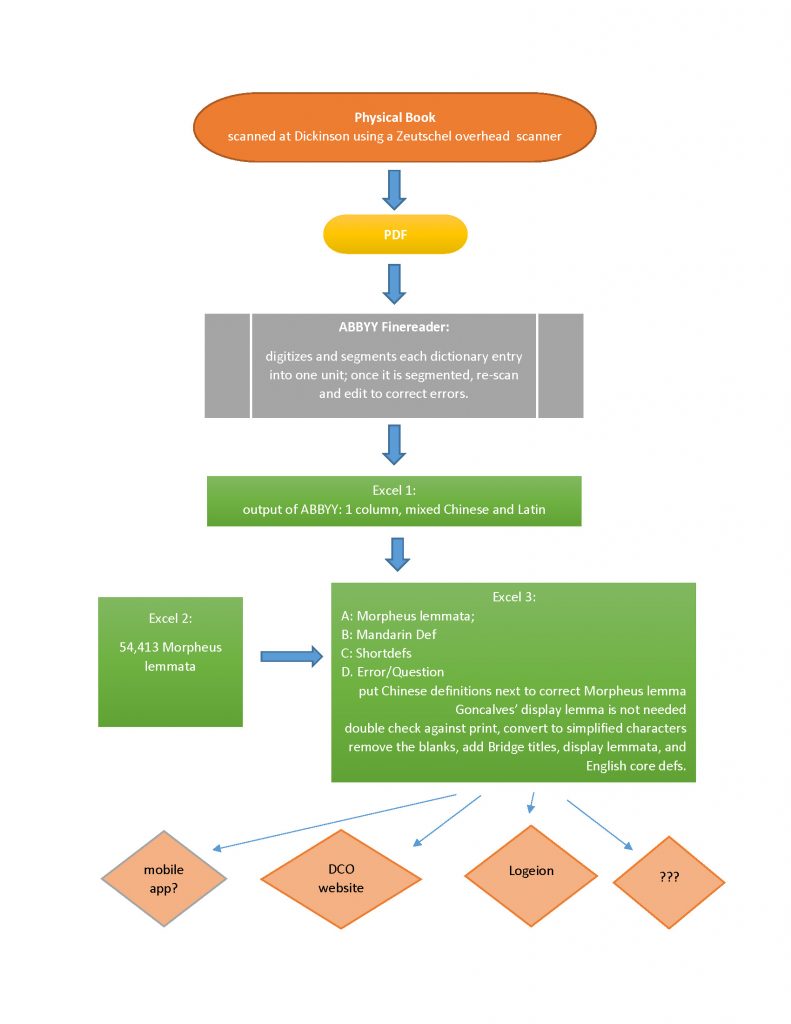The Dickinson Classical Studies department has been privileged to be involved with a number of interesting initiatives related to the now flourishing study of the Greco-Roman classics in China. People sometimes ask me what all is going on, so I thought I would summarize where we are at this point, and think about what is coming next.
Dickinson and Columbia University co-sponsored a conference at the Columbia Center in Beijing in May, 2019. Full program. It was organized primarily by Gareth Williams at Columbia. Their classics program (and the university as a whole) has a long history of sponsoring Chinese scholars. Jinyu Liu (DePauw U., pictured bottom right in the first link above) is in many ways the linchpin. She’s the leader on the large grant-funded project to translate all of Ovid into Chinese. This project was the subject of the conference.
This summer I made contact with two dynamic Latin teachers at Beijing Foreign Studies University, Li Hui (Rosina) and Luciano Romano. They teach entirely in Latin, using Oerberg’s textbook and techniques honed in Italy, where Rosina and Luciano were trained. I also made contact with and visited the classroom of Dr. Hendrikus A.M. van Wijlick (Rik), who teaches in a more traditional (English) mode at Peking University.
Dickinson Classics Online presents resources for Chinese readers of Greek and Latin. This is hosted at Dickinson with a far-flung editorial board. The officers are myself, Marc Mastrangelo (Dickinson), and Jinyu Liu (DePauw). This developed starting in 2015. The idea was Marc’s and mine (after seeing Jinyu and Harvard’s Michael Puett give talks at the 2014 APA). Jinyu is again the key connecting figure acquiring content, whereas I take care of the web development.
Dr. Elizabeth Penland, Upper School Latin Teacher, Wyoming Seminary, Kingston, PA, has been organizing her students to translate DCC Caesar and Vergil commentaries into Chinese. The Caesar is already published (actually made when Liz was at Concord Academy), and the Vergil is in process. The SCS published a blog post by her about forging connections between the ancient Mediterranean and modern Chinese culture. One of her students, Lixiang (Andy) Lin, also helping this summer with the following related project.
Digitization of Goncalves’ Lexicon Magnum Latino-Sinicum. I have a recent blog post about that. I have been leading this effort since 2016, but have had help from a number of students, some Chinese, some not. A preliminary test version is already up on DCO, and a mobile app is ready to launch as soon as we have the data cleaned. Hoping to be done by the end of this calendar year.
Digitization of the Cursus Litteraturae Sinicae (1879-1882) by Angelo Zottoli. This four-thousand page work, presented as a Latin introduction to the written Chinese language, is actually a synoptic guide to the Chinese tradition, encompassing a vast range of texts from the Shijing 詩經(Book of Songs) to Qing-era examination essays, poetry, and letters. See Nicholas Morrow Williams, “Angelo Zottoli’s Cursus Litteraturae Sinicae as Propaedeutic to Chinese Classical Tradition.” Journal of Oriental Studies 63.2 (2015), pp. 327–359. I am collaborating in the long-term endeavor of publishing this on DCO with Chinese scholars, especially Kang Kai and Wang Chen (both from Shanghai). Work is in early stages.
My main base in Shanghai is Shanghai Normal University, and the Guangqi International Center for Scholars, where Marc Mastrangelo and I are honorary fellows, and Jinyu has a regular appointment. This research institute is headed by Heng Chen, a dean at SHNU, and sponsors an active series of lectures and seminars in classical studies, organized by Jinyu.
Once I write it all out like that, I see there is a lot going on. The publishing projects alone could occupy me full time from here on out. I am finally learning Chinese myself, partly to be able to cope with Zottoli, which is a truly amazing work. Check out the Williams article cited above if you have the chance. For my own teaching, my goal is to take better account of comparative perspectives and read some Chinese and Latin classics in tandem. I’ve got an idea for a course on writing about war, with Homer, Sun Tzu, and Julius Caesar.
My contacts in China are at the university level, but I can see there is a lot of potential to promote Latin for high schoolers as well. I had a conversation at the Conventiculum Dickinsoniense with David Bonagura of Regis High School, who went on a mini-tour of a number of high schools in China promoting Latin, a tour initiated by one of his Chinese-born students and his family. There is real potential for establishing summer Latin programs in Beijing and/or Shanghai to further promote the subject. Conventiculum Pekinense, anybody?










